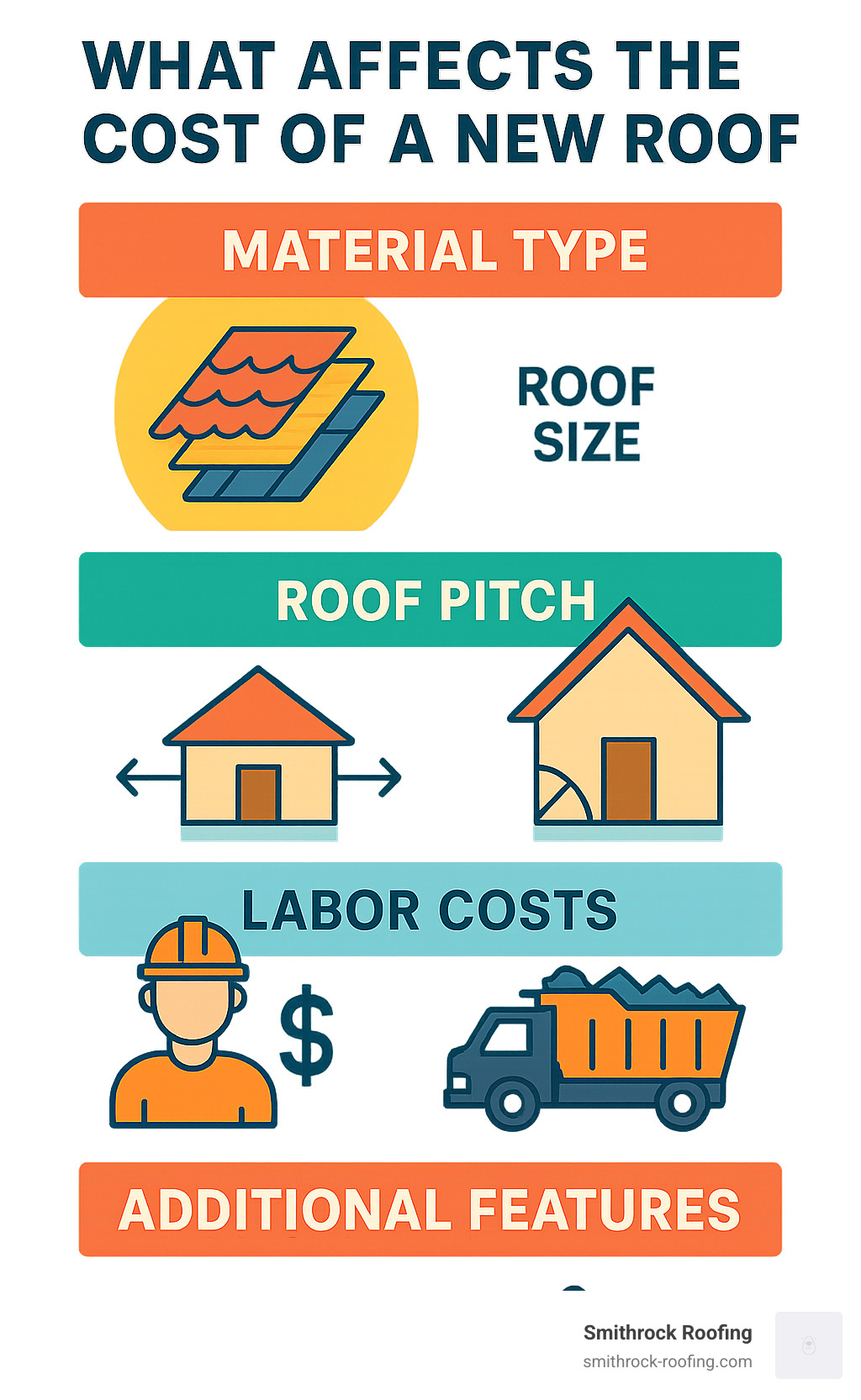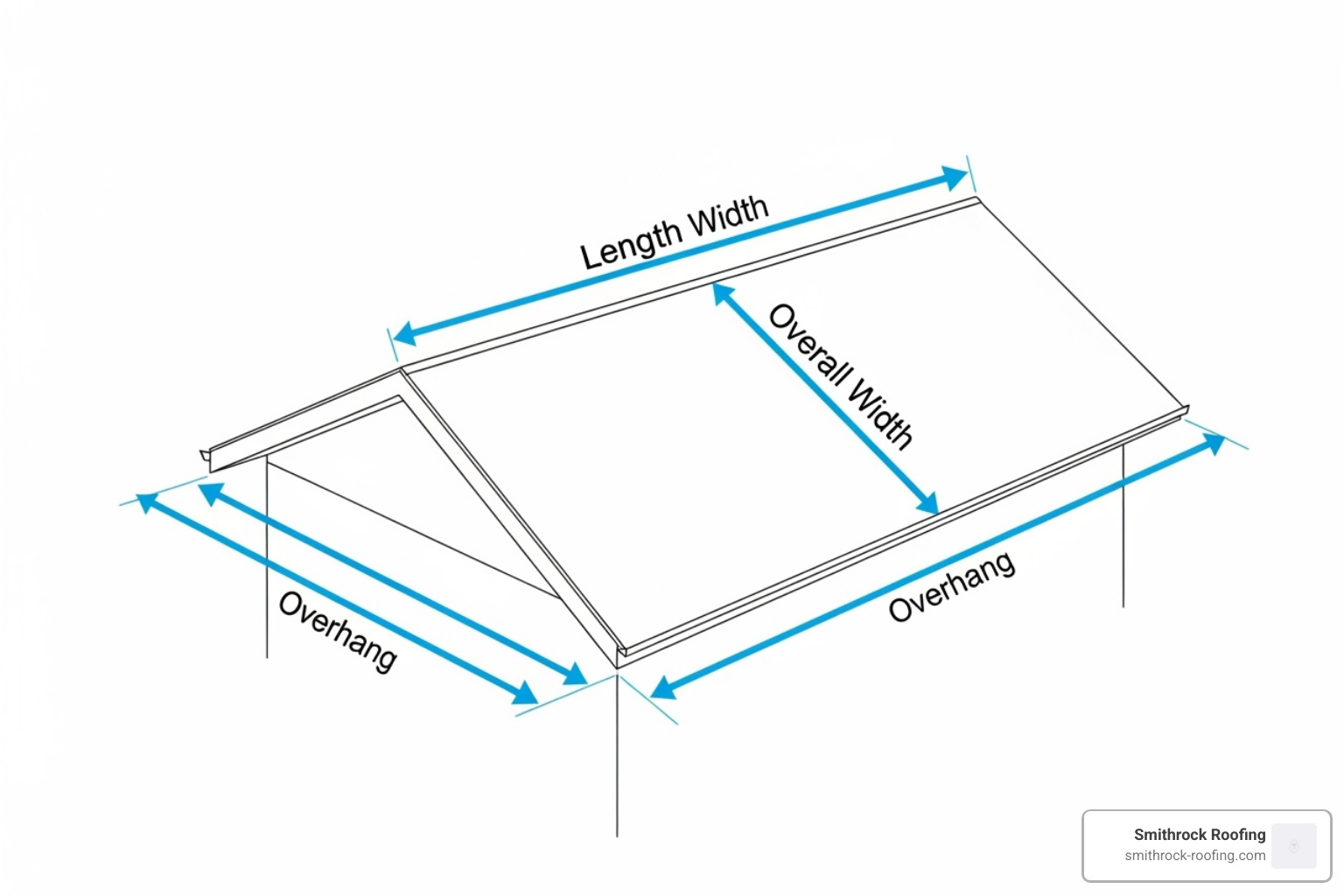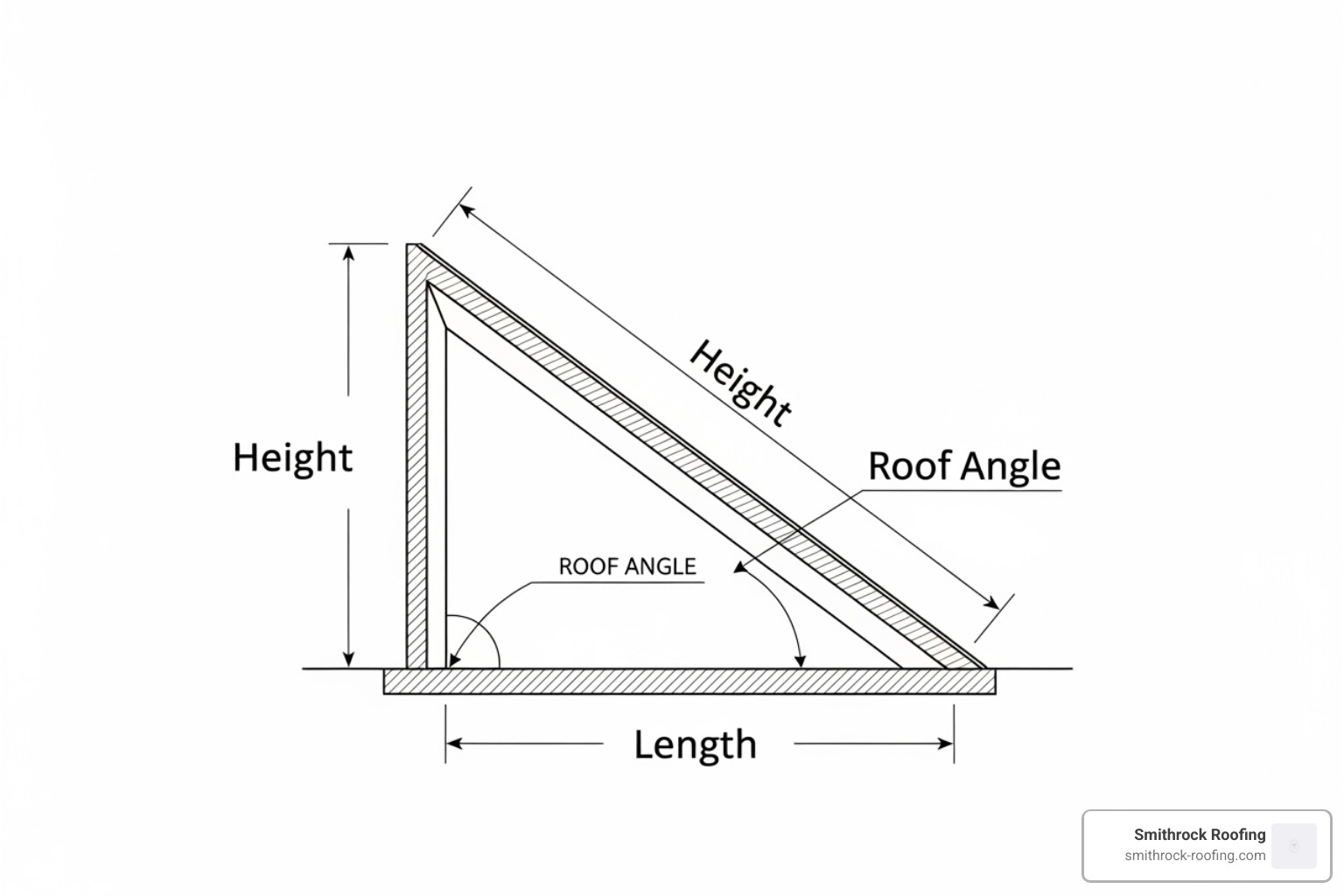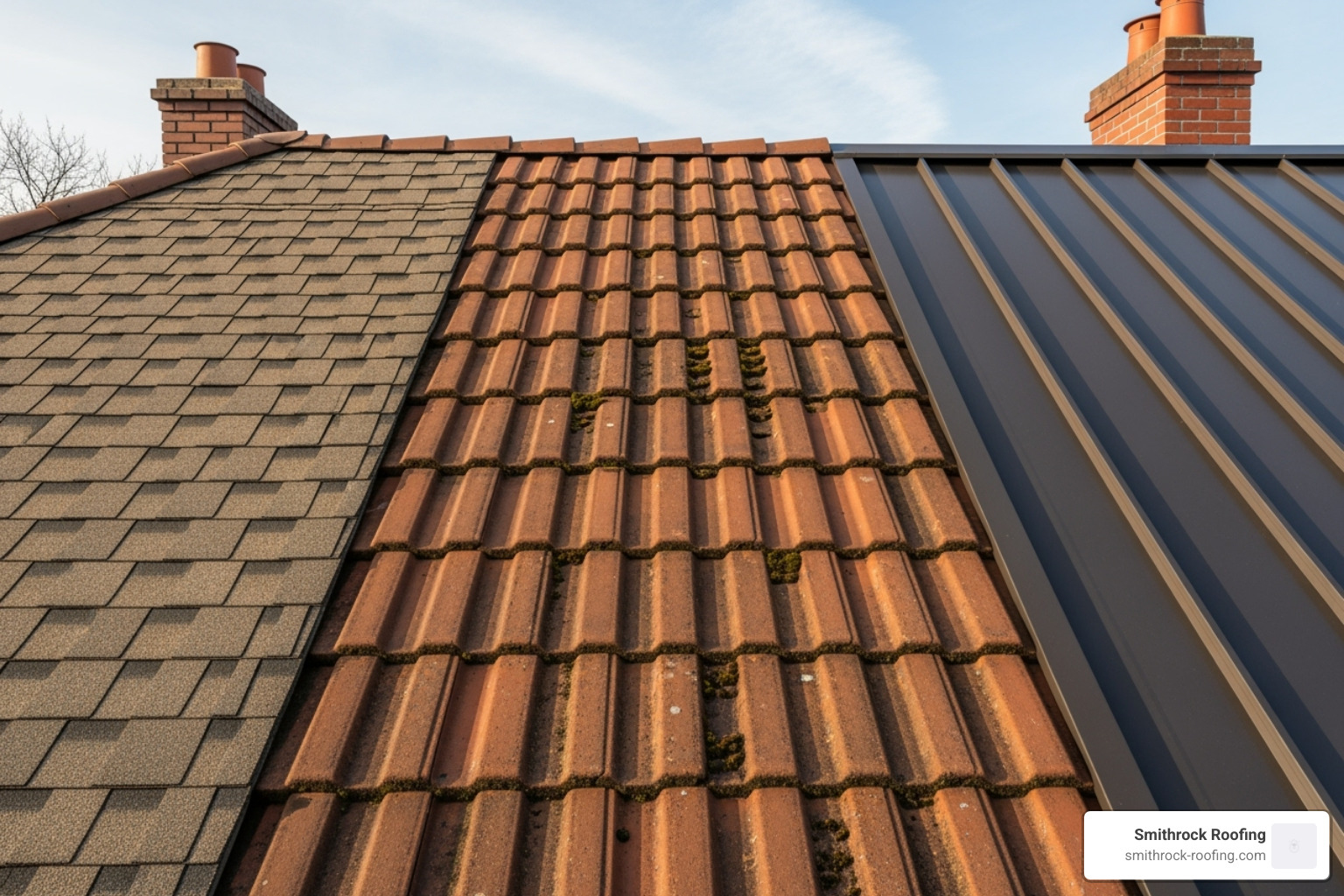A roofing calculator is an indispensable online tool designed to provide a quick and accessible cost estimate for your roofing project, making the critical first steps of planning and budgeting far more manageable. Its primary purpose is to give homeowners a reliable ballpark figure for a full roof replacement or a new installation. It does this by taking basic inputs—like your home’s dimensions and preferred material—and estimating the roof’s total size, the quantity of materials needed, and the potential project costs. This initial financial insight is invaluable, as it helps you understand the scope of potential expenses long before you engage with a professional contractor.
Replacing a roof is one of the most significant investments you’ll make in your home. The final cost can be substantial, so understanding the financial landscape upfront is not just helpful—it’s essential for making smart, informed decisions. A calculator demystifies the process, changing a daunting unknown into a tangible set of figures you can work with. This guide will walk you through how to use these powerful tools effectively and interpret their results with confidence.
As Jordan Smith, with over 15 years in exterior construction and a combined 40 years of family experience at Smithrock Roofing, I’ve seen how a good roofing calculator can empower homeowners. It provides a baseline of knowledge, allowing for more productive and transparent conversations with contractors. We’re here to help you steer these estimates with the honesty and integrity your investment deserves.

Quick look at roofing calculator:
Think of a roofing calculator as your first, no-pressure conversation about a future roof project. It provides a preliminary yet comprehensive look at potential costs, helping you understand the financial scope before you commit time and resources to getting formal quotes. These free online tools are designed to simplify the otherwise complex calculations involved in full roof replacements, new construction installations, or even just estimating material needs for a large-scale repair.

Many modern roofing calculators have evolved beyond simple number crunching. Some can generate 2D diagrams of your roof based on your inputs, showing different facets, components, and angles. This visual aid is incredibly helpful, allowing you to see exactly what you’re working with in a way that is far more intuitive than a spreadsheet of numbers alone.
Accurate measurements are the bedrock of a reliable estimate; a roofing calculator is only as good as the data you feed it. The process begins with your home’s base area, often called its footprint. You can get this by measuring the length and width of your home at ground level. If your home has a more complex shape, like an L-shape or T-shape, simply break it down into individual rectangles. Measure each one separately, calculate its area (length x width), and then add the areas together for a total footprint.
Here’s a checklist of what you’ll typically need:
For your safety, it is crucial to take all measurements from the ground. You are measuring the horizontal distances; the calculator’s built-in formulas will handle the conversion to a sloped surface area. Don’t forget to include porches, attached garages, and overhangs, as these are often overlooked but contribute to the total material and labor required. For highly complex roofs, treating each distinct plane as a mini-project will ensure your final estimate is as accurate as possible.
Roof pitch refers to the steepness (or slope) of your roof, and it is one of the most significant factors affecting your project’s scope and cost. Understanding this concept is key to realizing why two homes with the exact same square footage on the ground can have vastly different roofing costs.

Pitch is expressed as a rise over run ratio. The rise is the vertical increase in inches for every 12 inches of horizontal distance (the run). For example, a 7/12 pitch means the roof rises 7 inches vertically for every 12 inches it extends horizontally. A steeper roof has a significantly larger surface area than a flatter one, and this is calculated using a pitch correction factor.
A gentle 3/12 pitch adds only about 3% to the base area, but a steep 12/12 pitch (a 45-degree angle) increases the surface area by over 40%. This multiplier is essential for converting your home’s flat footprint into the true, three-dimensional surface area that requires materials and labor.
| Pitch (Rise/Run) | Angle (Approx.) | Multiply By (Correction Factor) |
|---|---|---|
| 2/12 | 9.46° | 1.016 |
| 3/12 | 14.04° | 1.031 |
| 4/12 | 18.43° | 1.054 |
| 5/12 | 22.62° | 1.083 |
| 6/12 | 26.57° | 1.118 |
| 7/12 | 30.26° | 1.158 |
| 8/12 | 33.69° | 1.202 |
| 9/12 | 36.87° | 1.250 |
| 10/12 | 39.81° | 1.302 |
| 11/12 | 42.51° | 1.357 |
| 12/12 | 45.00° | 1.414 |
Learn more about roof pitch calculations.
This is where your roofing calculator transforms into a dynamic planning assistant, allowing you to see in real-time how different choices impact your budget. Every roofing material comes with a unique price point, aesthetic, and lifespan.
Your project scope is another major cost variable. A full tear-off is the recommended approach, involving the complete removal of old roofing materials down to the roof deck. This allows for a thorough inspection and repair of any underlying damage. A layover (or re-roofing) involves installing new shingles over the old ones. While faster and cheaper, it can hide serious problems and is often not permitted by building codes if a layer already exists. Finally, the number of stories of your home directly influences labor time, equipment needs, and safety precautions, all of which impact the final cost.
Explore the best roofing materials for your home.
After you’ve entered all your data, the roofing calculator will generate a detailed project summary. Understanding what these numbers mean is the key to effective budgeting and planning.
These results provide a solid, data-driven foundation for your project. You can use them to compare the financial impact of different materials, set a realistic budget, and enter into conversations with professional roofers with a strong understanding of your needs.
Your roofing calculator estimate is an excellent starting point, but the final, official price from a contractor will depend on a host of specific factors. Think of the calculator’s figure as a national travel budget; your actual trip cost will vary based on your specific destination, activities, and local prices. Similarly, national averages provide a ballpark for roofing, but your true costs will be determined by your location. Prices in Winston-Salem can differ significantly from those in Greensboro or High Point due to local labor rates, material supplier pricing, disposal fees, and specific municipal building codes.

Your choice of roofing material is the primary driver of cost. It’s a balance between upfront investment, long-term durability, and aesthetic preference. Here’s a detailed breakdown of what you can expect to pay per square foot, including professional installation:
Matching the right material to your budget, home style, and long-term goals is crucial. At Smithrock Roofing, we help you understand these trade-offs and back our installations with comprehensive warranties for your peace of mind.
Learn about our roofing warranty.
Labor is the largest single expense in a roof replacement, often accounting for 60% or more of the total cost. This fee covers the team of skilled, insured professionals who will tear off your old roof and install the new one safely, efficiently, and correctly. Several key factors influence the total labor expense:
When you choose Smithrock Roofing, you’re investing in experienced professionals who work efficiently and prioritize safety, delivering long-term value and preventing costly mistakes.
Our professional roof installation services.
Even the most sophisticated roofing calculator can’t see beneath your existing shingles. A professional inspection is designed to uncover these potential hidden costs. Be prepared for these possibilities:
These potential costs highlight why a thorough, on-site inspection is non-negotiable. At Smithrock Roofing, we believe in transparency and will identify and explain all potential costs upfront. We also offer financing options to help manage your investment.
Consider financing options for your project.
Online roofing calculator tools are a fantastic resource for the initial stages of a roofing project. They empower you to get instant ballpark figures, explore the cost implications of different materials, and get a general feel for your project’s budget—all from the comfort of your home without any sales pressure. However, to use these tools effectively, it’s critical to understand their inherent limitations and recognize the point at which you must transition from an online estimate to a professional quote.
The most important word to remember is estimate—not quote. The distinction between these two terms is critical to managing your expectations.
An estimate is a preliminary, approximate calculation based on standardized data and the information you provide. It’s a starting point, a well-informed guess designed for planning and budgeting. Think of it as a rough budget for a vacation.
A quote is a firm, legally binding price offer from a contractor that is generated only after a thorough, on-site inspection of your specific roof. It accounts for all the unique variables of your property. This is the final, booked-and-paid-for itinerary for your vacation.
The margin of error between an online estimate and a final quote can be significant. Even advanced tools that use satellite imagery for measurements can’t see everything. They cannot detect rotted decking hidden under shingles, identify multiple layers of old roofing that need to be torn off, or diagnose underlying structural issues. Furthermore, the accuracy of the estimate is entirely dependent on the accuracy of the measurements and pitch you input. A small error in your initial data can lead to a large discrepancy in the final cost.
The figure from an online calculator is a guide for planning, not a price to take to the bank. Even professional roofers may use similar software as a starting point, but it is always followed by a detailed physical inspection.
Roofing calculator tools have several blind spots that can materially impact your project’s final cost. Being aware of them helps you use the tool wisely:
Understanding the right time to use each tool will save you time, prevent surprises, and lead to a better outcome.
Use a roofing calculator for:
Call a professional for:
Local expertise is invaluable. A contractor like Smithrock Roofing brings deep knowledge of the regional pricing, common weather-related issues, and specific building codes in Winston-Salem, King, Clemmons, and the surrounding communities. This local insight leads to more accurate quotes, better material recommendations, and higher-quality, longer-lasting solutions.
Deciding between roof repair vs. replacement.
As you begin your research, several common questions often arise. Here are clear, straightforward answers to help you use roofing calculators effectively.
This is one of the most common points of confusion. Your home’s square footage refers to the living space, or its flat footprint on the ground. Your roof’s area, however, is always larger because roofs are sloped. The pitch, or steepness, of the roof adds significant surface area. A roofing calculator is programmed to account for this by using a pitch multiplier (or correction factor). This mathematical formula converts your home’s flat footprint into the true, three-dimensional roof area that needs to be covered with materials. For example, a single-story home with a 1,700 sq. ft. footprint could easily have a 2,000 sq. ft. roof with a standard 6/12 pitch, or an even larger 2,400 sq. ft. roof with a steep 12/12 pitch.
It is an essential and standard industry practice to add a waste factor of 10-15% to your total material order. This isn’t for mistakes, but rather for the planned material that is lost during the installation process. This buffer accounts for shingles that must be cut to fit around valleys, hips, ridges, and chimneys. It also covers the material used for the starter course at the eaves and the cap shingles on the ridges. A simple gable roof might only need a 10% waste factor, while a complex roof with many angles and dormers may require 15% or even more to ensure the project isn’t delayed by a shortage of materials.
While most online calculators are designed and calibrated for full roof replacements, you can use one to get a rough estimate of the material needed for a specific section needing repair. However, for small repairs, we strongly recommend getting a direct quote from a professional. A calculator cannot price the most important part of a repair: the labor and expertise. A professional roofer can accurately assess the full extent of the damage, identify any underlying issues like deck rot that caused the problem, ensure a proper material and color match, and provide a precise labor cost for a smaller, more nuanced job. For repairs, an on-site evaluation is always the best approach.
Many roofing calculators do attempt to estimate labor, but this is often the least accurate part of their calculation. They typically use broad national or regional averages that may not reflect the specific labor market in your city. These averages cannot account for the unique complexity of your roof, accessibility challenges, or the quality and experience of the crew. The labor estimate from a calculator should be seen as a very rough guideline. The only way to get an accurate labor cost is through a detailed quote from a local contractor who has physically inspected the job site.
Knowing your roof’s pitch is key for an accurate estimate, but you should never climb onto your roof without proper safety equipment and experience. Here are two safer methods:
When in doubt, a professional roofer will determine the exact pitch during their inspection.
Get a quote for roof repair services.
You should now feel significantly more confident about navigating the initial stages of your roofing project. A roofing calculator is a fantastic modern tool that serves as your first step. It empowers you with preliminary estimates, helps you understand material quantities, and allows you to explore the financial implications of different options, all of which are crucial for effective financial planning.
However, it is vital to remember that an online calculator is a starting point, not the final word. It is a tool for budgeting, not for purchasing. It cannot see hidden damage beneath your shingles, account for the unique complexities of your roof’s architecture, or factor in specific local building codes and labor costs that heavily influence the final price. For a precise, reliable, and binding quote, you need the trained eye and hands-on expertise of a professional’s on-site assessment.
That’s where Smithrock Roofing comes in. We bridge the gap between your initial estimate and a concrete plan. We provide transparent, detailed, and accurate quotes based on a thorough physical inspection of your home. As a local company, we understand the unique needs and weather challenges faced by families in Winston-Salem, King, Clemmons, Lewisville, and our other North Carolina service areas. Our team is dedicated to using high-quality products and providing superior professional installation, giving you complete peace of mind from our first conversation to the final inspection.
When you’re ready to move from a ballpark estimate to a reliable plan of action, we’re here to help make your roofing project a smooth, transparent, and stress-free experience.
Take the next step and explore our comprehensive roofing services

Smithrock Roofing © Copyright 2025 • All Rights Reserved • Privacy Policy • Maintained by Mongoose Digital Marketing